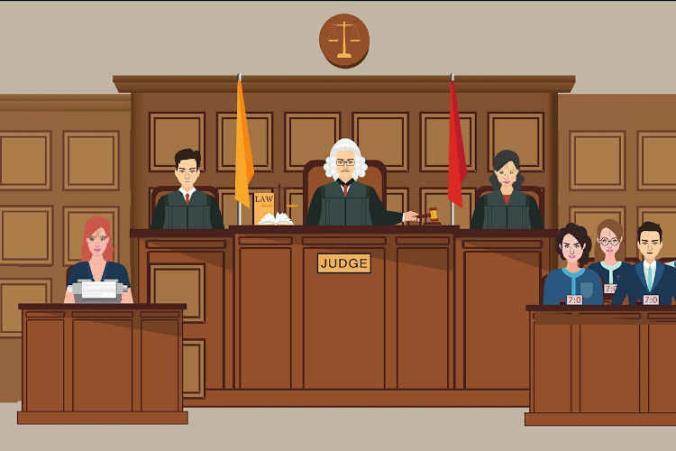The Board of Industrial Insurance Appeals is a state agency in Washington State. Some people refer to it as the Board of Appeals, the Board, or BIIA. Interestingly, it behaves somewhat like a court. As such, it decides the outcome of L&I disputes.
Workman’s comp claim appeal and the board
The Board is separate and independent from the Department of Labor and Industries (L&I). After L&I makes a decision, either party can appeal the L&I decision to the Board. In practice, it means that not only work injury claimants and employers can file an appeal. In fact, physicians, retrospective rating groups, and others can also appeal L&I decisions.
When appealing, the party that files the workmen’s comp appeal has the burden of proof. In simple words, the filing party has to prove that L&I’s decision is wrong. In turn, the Board will hear the evidence in the appeal. After that, the Board will issue a written decision stating whether L&I’s decision was right.
Attorney for workman’s comp board appeal
Many people hire a workman’s comp attorney for Board appeals. It’s not mandatory to have an attorney. However, the rules and processes of a Board appeal can be overwhelming. Here, in this article, I’m going to try to provide an overview of the steps of a Board appeal. However, please note that this is a high level and non-exhaustive overview.
The steps of a Board appeal
Step 1 – Receipt of appeal
The first step happens when the Board receives an appeal. The Board assigns each new appeal its own “docket number”. Then, they use this number to identify the case throughout the Board appeal process. After that, the Board mails a notice to all parties in the appeal and to L&I. The purpose of the letter is to inform everyone of the appeal and its docket number.
Step 2 – L&I response to the appeal
When L&I receives an appeal, they must decide what to do. Generally, L&I has 3 options. The 1st option is to send the workman’s comp claim record to the Board and allow the appeal to proceed. In contract, L&I can take option #2. Here, L&I can change or reverse its decision. Finally, there’s option #3, which is to tell the Board that L&I wishes to reconsider the decision. Either way, L&I must choose an option within 60 days. If L&I reconsiders its decision, then the Board sends the claim back to L&I for further action.
Step 3 – Granting the Board appeal
After receiving an appeal, the Board has 60 days to grant or dismiss it. For that, the Board examines if the filing of the appeal was timely. They also check if the appeal is legally appropriate. In legalese, we say that the Board must figure out if it has jurisdiction to hear the appeal.
Next, if L&I doesn’t reconsider and the Board determines it has jurisdiction, then the Board issues an order granting the appeal. This step can be very confusing for non-lawyers. Granting the appeal means that the Board can legally hear and decide the case. Nothing more. It doesn’t mean that you won the appeal.
Step 4 – Mediation
Usually, the first step after granting an appeal is the mediation conference. What is it? It’s an informal meeting between the parties with a mediation judge. Before the mediation conference, the Board sends a notice to everyone. In it, the notice states the date, time, and location of the meeting. Before COVID, the Board held these conferences (mostly) in person. Since COVID, they are mostly over telephone. Sometimes, over zoom. Many times, the Board will allow multiple mediation conferences. In fact, that’s pretty common. By doing so, the Board gives the parties more time to resolve disputes without litigation.
Interestingly, the Board reported that work injury claimants participate more in conferences since telephone meetings became available. Obviously, that’s because of ease and convenience. Personally, I think it’s also because phone conferences are less intimidating. Yet, the Board is actively working to determine if and how they can return to in-person mediation.
Step 5 – L&I claim appeal hearing
If mediation isn’t fruitful, then the case goes to a hearing. Normally, the Board sends notice that the matter is advancing to a hearing. Then, the first step after is a scheduling conference. There, at the conference, the Board hearing judge sets a litigation schedule. The schedule includes dates and milestones. For example, deadlines to complete discovery or confirm witnesses. On top, dates to file briefing, and other steps.
Step 6 – Cost and fees
Do you know how much a workman’s comp claim appeal costs? With appeals, each party is responsible for its own costs and fees. Even if you win. That’s right. No one pays your costs or attorney fees. There’s no reimbursement or refund. Furthermore, each party is responsible for scheduling costs and their own witness fees. Therefore, costs can become significant. It’s definitely something to watch out for.
Step 7 – The Board appeal hearing process
The Board hearing is similar to a trial in a regular court. In fact, Legal Rules of Evidence and Superior Court Civil Rules apply. These rules say what you can and can’t do. In addition, they say how parties must interact with each other and with the Board. In hearings, parties can represent themselves before the Board. The BIIA also allows lay representatives if they don’t charge a fee or ask for compensation. More details are available in WAC 263-12-020(3)(a)(iii). All parties must become familiar with evidence and procedure rules. Even if they are not lawyers.
During hearings, the parties or their representatives must present evidence. The parties do so through witness testimony in a question-and-answer format. If a party doesn’t have legal representation, the Board hearing judge helps question witnesses. However, the judge cannot act as an attorney for either side. They must stay neutral.
Most importantly, the appealing party must present evidence to meet the burden of proof. In other words, they have to show enough evidence to prove that L&I’s decision is incorrect. Records like medical chart notes and letters are not sufficient. The Board judge won’t consider them if the other party objects. In fact, attorneys must object to medical notes and letters on the basis of the Rules of Evidence.
Step 8 – Proposed decision and order
Eventually, the parties finish presenting evidence. After that, the Board judge reviews the evidence and writes a Proposed Decision and Order (PD&O). The PD&O contains an analysis of the facts and relevant law. Furthermore, it includes the judge’s findings of fact and conclusions of law.
Step 9 – Petition for review
Sometimes, a party disagrees with the Proposed Decision and Order. In such cases, the party can file a Petition for Review (PFR). Then, when the Board gets a PFR, they either grant or deny it. This decision is entirely up to the Board. In turn, if the Board denies the petition, then the PD&O becomes its final decision. In contrast, if the Board grants the petition, the opposing party can file a response. Finally, the Board issues a Decision & Order (D&O). It include the facts, relevant law, and findings. The Decision and Order is the final determination of the Board.
Step 10 – L&I claim appeal to Superior Court
Any party that disagrees with the Board’s final decision can appeal to Superior Court. As always, there’s a timeline to follow. To help, the Board’s final decision comes with an information sheet. It includes the timelines and requirements to appeal to Superior Court.
Summary and conclusions
Many workers with an L&I claim in Washington State want to know if they need an attorney for a Board appeal. For that, the law is very clear. A workman’s comp attorney is not required. However, L&I almost always has legal representation from the Office of the Attorney General. Moreover, when dealing with a self-insured employer, they usually have highly experienced attorneys on their side. Additionally, it’s common to see attorneys with vast experience representing retrospective ratings groups. Hence, it can be difficult for individuals to get up to speed and represent themselves.
The main challenge is to match the level of the attorneys on the other side. Consequently, the Board urges parties with no legal representation to at least speak with an attorney. They usually recommend it early in the appeal process. However, as the Board appeal progresses, the more challenging it becomes to find an attorney that’s willing to step in. That’s when representation becomes more difficult. It’s because there’s a lot of work to do, to get up to speed, in a very short time window.


